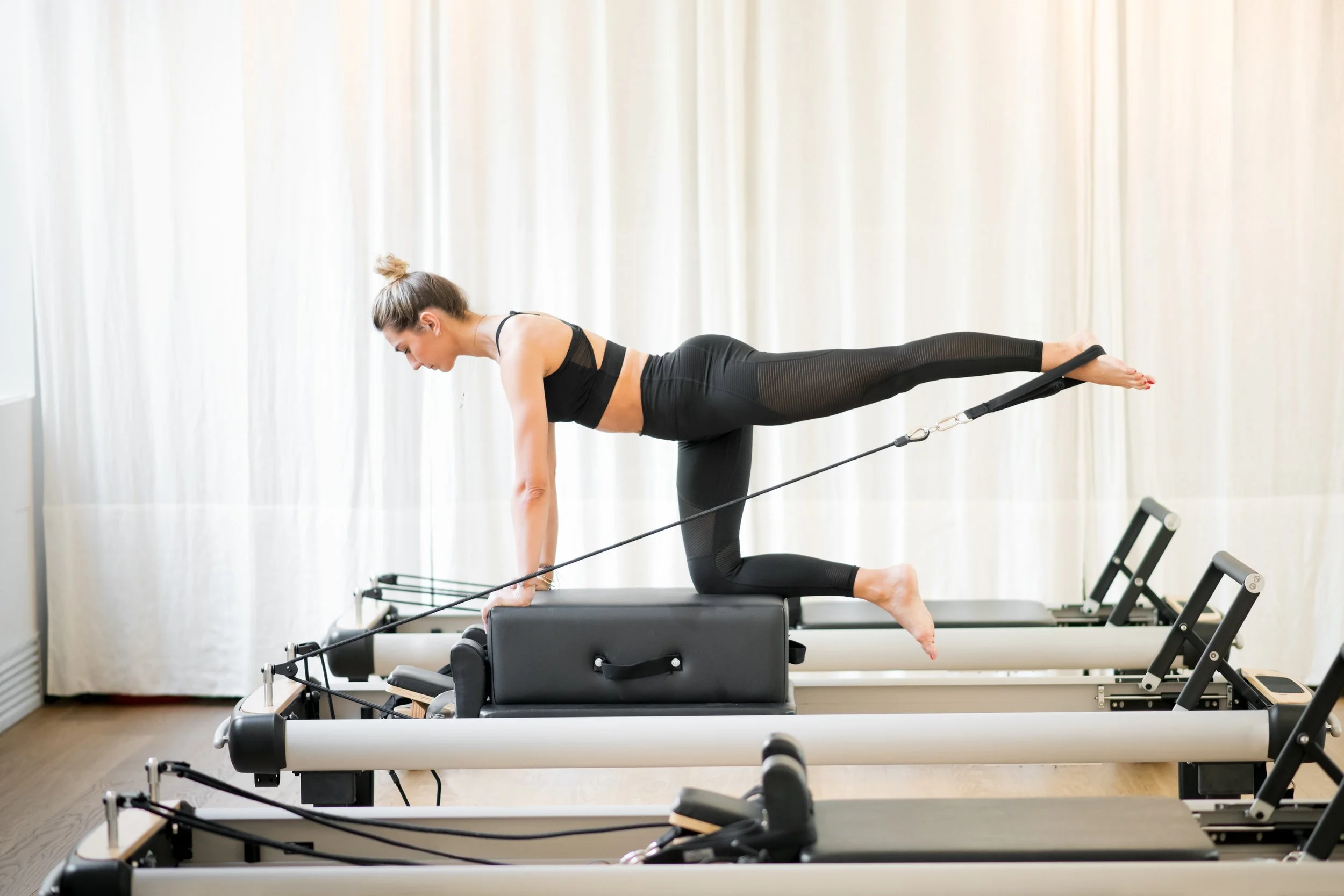The Six Principles of Pilates
Joseph Pilates set out to change the world with his exercise method he named Contrology nearly 100 years ago.
Pilates alluded to principles throughout his teachings and writings, including in his book "Return to Life" published in 1945 (a good read - I have a copy if you want to borrow it ). Today we refer to Joseph Pilates exercises as Pilates. It is important to note that Joseph Pilates did not directly state these six principles - they are distilled from his teachings and writings by those who were instructed by him, and some have added principles to the list over the years. While the exercises of Pilates has evolved over the years, these six key principles remain the foundation of Pilates and should be incorporated into your Pilates practice:
1. BREATH
Breath is one of the keys to life itself. As our constant companion, and our most immediate anchor to the present moment, the breath is a gateway to awareness. The simple act of focusing on the breath can have tremendous benefits for the autonomic nervous system, offering a shift out of our daily fight-or-flight, hustle-and-bustle state and into a state of relaxation and meditation. The brain-fortifying effects of focusing on the breath in meditation are well documented. Breathing is more than just air coming in and out of our lungs, and it benefits more than our brains. It detoxifies our bodies and can help nourish our blood with oxygen. By coordinating our exercises with breath, we can get the most out of each movement.
2. CENTER
Centering is a defining characteristic of Pilates and reflects Joseph Pilates' understanding that all movement begins and emanates from the center. Generally speaking, the center of gravity of the body lies in front of the sacrum, about three fingers width below the belly button, but it can vary as bodies are different heights and carry weight differently. The center of gravity may shift as we move and reach, and Pilates exercises allow us to stay balanced. In Pilates, the center is often referred to as the "core" or "powerhouse", and all movements initiate from that center. The practice of each movement initiating from the core strengthens all muscles and protects the spine, energy flows from the center out. Core stability - centering - allows us to carry out movement with grace and efficiency.
3. CONCENTRATION
Concentration is the state of mind we cultivate in a Pilates session. It is the attention to a single objective, and in Pilates that is that is the exercise you are performing in that moment. Joseph Pilates insisted each exercise be performed with purpose, versus "going through the motions". Your goal is to perform the exercise as correctly as you are able, which requires concentration, and allows you to get more out of each movement. To practice Pilates without focus - like you might approach jumping jacks - would mean missing out on the corrective nature of the exercises for proper skeletal alignment and also on the chance to improve your overall mental well-being. Performing an exercise is more than just moving our bodies. We need to be aware of how we are breathing, what muscles are engaging (or not), what position our body is in, how the movement makes us feel (release, strength, joy, discomfort, pain, etc.). By practicing concentration during Pilates, it will encourage us to be more mindful of how we move throughout our life.
4. PRECISION
Precision is key when distinguishing Pilates from other exercise programs. Precision can be described as the exact manner in which an action is executed. And precision is the high standard asked of Pilates practitioners and teachers. Knowledge of anatomy aids greatly in achieving precision. You and your teacher will understand which muscles are working or should be working. You and your teacher will align your body correctly and understand the goals of an exercise, the muscles being targeted for movement and stabilization. The greater the precision, the more likely the goal will be achieved and the greater the benefit from doing the exercise.
5. CONTROL
Given Pilates was named Contrology, this principle can't be a surprise. Control is the goal of Pilates. This process of developing finely tuned awareness and physical dexterity is what scientists call kinesthesia or kinesthetic intelligence (KI). For example, learning to roll through the spine - not treating it like one long rod, but as individual bones moving one at a time - demands a dynamic interplay between stability and mobility that is delicately coordinated by the nervous system. Refining control is inherent in mastering a skill. The first time you execute an exercise, you will use control, but as your skill increases this control becomes more refined. You can see a distinct difference when viewing a movement performed by someone who has gained a high level of control and someone who has not. A higher level of control presents with fewer and smaller errors, precise alignment, greater coordination, better balance, and the ability to reproduce the exercise successfully and efficiently. Refined control requires consistent practice and will result in increasing strength and flexibility of the muscles.
6. FLOW
Flow can be described as smooth, uninterrupted continuity of movement. True flow requires the above five principles be firmly in place. One of Joseph Pilates disciples, Romana Kryzanowska, describes the Pilates method as "flowing motion outward from a strong center". Flow requires an understanding of the movement and incorporates precise muscle activation and timing. As movement proficiency develops from practice, each movement and each session should flow with control and precision. In my mind, one might also think of "flow" as similar to the "runners high": you are engaging all five principles - breath, centering, concentration, precision, control - to be completely connected mind and body, immersed in the flow of your body performing the exercises with efficiency and grace.
If you read all the way to this point, you see how the principles build upon each other, how they are intertwined, and with practice you ultimately execute even the most challenging exercises and transitions beautifully. Pilates is a practice. It meets you where you are that day, in that moment. You apply the principles and give it your best in that hour. With a consistent practice, the benefits can change your life in the best ways.
We'd love to be a part of your Pilates practice. See our class schedule here, call, text, or email with questions or to inquire about private sessions.


